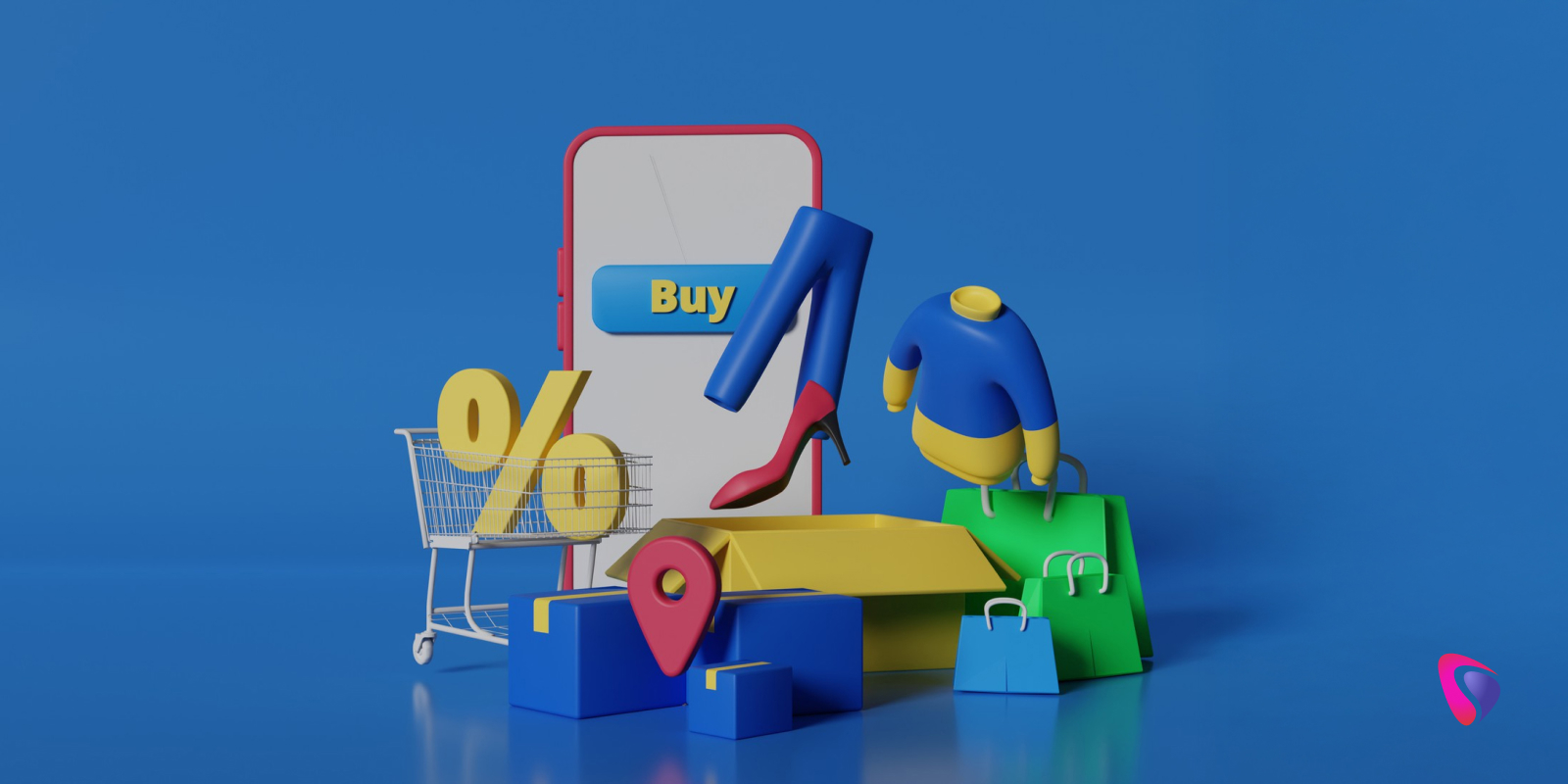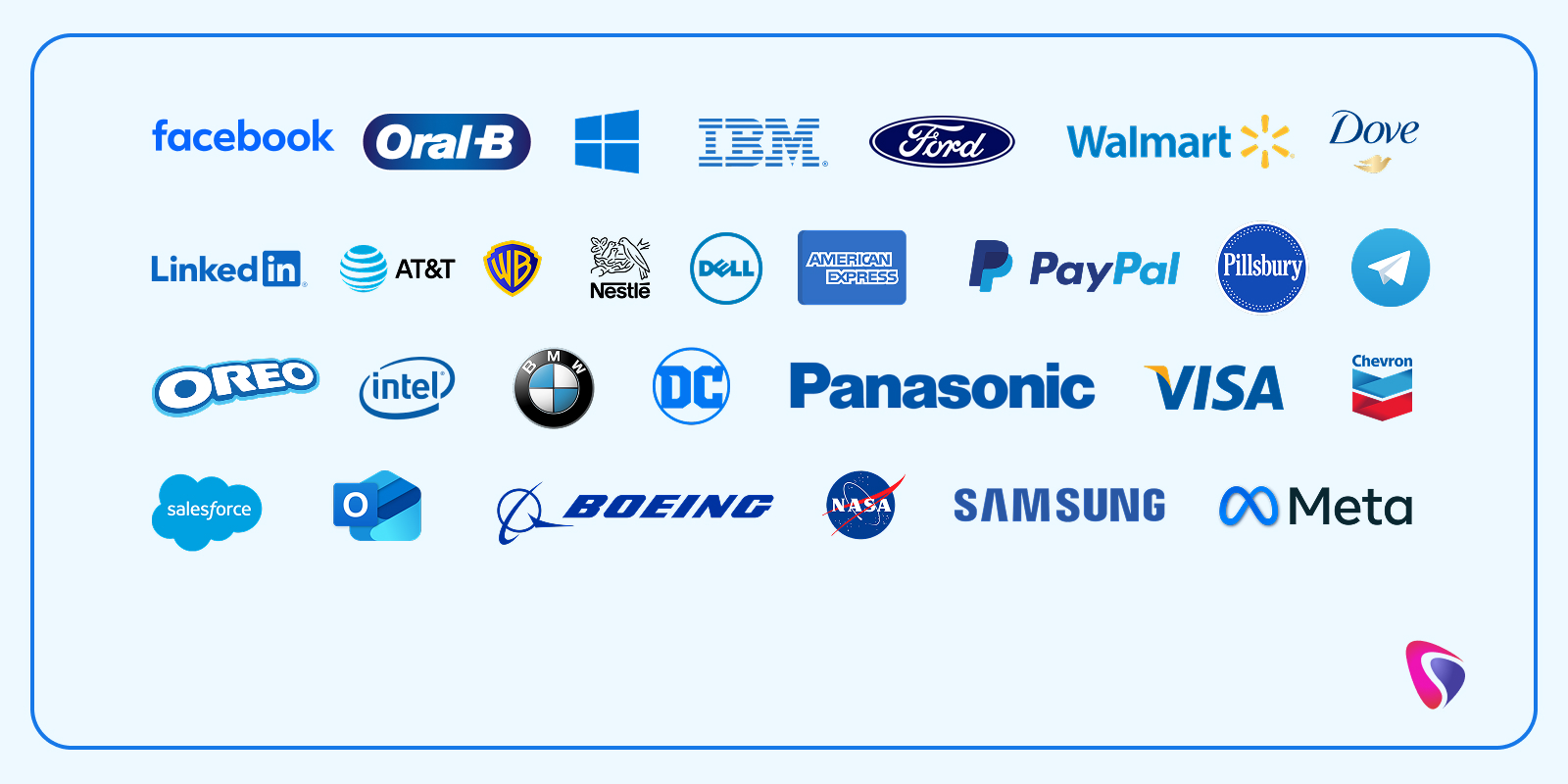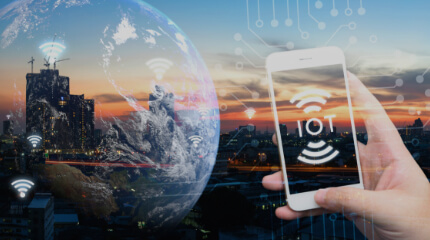
92% of companies across diverse sectors plan to invest in Gen AI within the next 3 years. Trends come and go, but the hype around Gen AI has been around since 2021. Do you think this is a coincidence? Not at all.
Have you ever thought about how companies used to promote their products and connect with their audience? Back in the day, businesses relied heavily on mass marketing and automation to reach customers. They bombarded us with the same old TV commercials, billboards, and newspaper ads, all in hopes of hitting the mark. But really, who was seeing these ads? Out of the countless millions who caught a glimpse, how many made a purchase?
There was little to no effort to personalize messages, tracking the success of these marketing strategies was tough, and customers had no way to share their thoughts. It was pretty much a game of trial and error. Sure, marketing automation has improved a bit, but it still leans heavily on demographics and mass marketing. Now, fast forward to today, and the landscape has transformed completely.
71% of customers expect businesses to deliver customized experiences, and 76% of them lost interest when this doesn’t happen. This highlights customer awareness and increased expectations.
Thanks to AI, businesses can take a giant leap beyond just basic automation and dive into the world of hyper-personalization. Gone are the days of bombarding customers with irrelevant messages. Now, there’s a sharper focus on understanding real-time customer behavior and interests. With AI-driven tools and platforms, companies can analyze live customer data to predict individual preferences and behaviors, allowing them to create content and responses that truly resonate.
Think about how Netflix offers personalized content recommendations or how Amazon suggests products tailored just for you. Studies indicate that these kinds of recommendations can boost revenue by an impressive 35 to 80 percent, which is a significant increase!
Customers now receive messages and recommendations that align with their interests, rather than being inundated with generic ads. This blog will explore various facets of AI-driven marketing, including its advantages, practical applications, challenges, and much more. Let’s dive in!
Why is there a Hype Around AI in Marketing?
AI is not just another marketing tool. In fact, AI has become a major transformative force for companies. The global market revenue for AI in marketing is projected to reach $107 billion by 2028.
AI is now a key player in marketing, whether we're talking about predictive analytics, generating content, hyper-personalization in real-time, or smarter campaign optimization. The introduction of AI tools like ChatGPT, Midjourney, DeepSeek, Jasper, Renderforest, and others has allowed companies to accomplish a lot more with less effort and in a fraction of the time. Here are a few examples:
- Create SEO-optimized blog posts in minutes.
- Generate ads tailored to different user personas and demographics.
- Create AI-powered videos in response to detailed prompts for social media promotion.
- Scanning the internet using AI to brand mentions or competitors to spot trends.
- Predict the best time, audience, and budget allocation for Google, Meta, and other ads.
- Analyze customer surveys, reviews, and NPS feedback to determine customer pain points and requests for specific product features.
Beyond just content, businesses can tap into tools like Runway ML to craft animations, branded graphics, and product mockups. This cuts down on the need to bring in a large team of designers, video editors, and other experts. Not to mention, these AI tools operate at a faster pace and can churn out more work than traditional professionals.
In essence, AI is revolutionizing creativity, allowing for quicker experimentation, versioning, and tailored experiences across multiple platforms. Such flexibility and efficiency were unimaginable years ago, but today, it’s all thanks to AI.
5 Most Crucial Applications of AI in Marketing
Below are some of the most crucial applications of AI in marketing.
1. Predictive Analysis and Customer Segmentation
Understanding and predicting customer behavior is crucial, especially in 2025, because customer expectations have increased, and they don’t give second chances. Customers spend 38% more when their experiences are personalized. With AI-powered predictive analytics, marketers can anticipate customer behavior and tweak their campaigns to achieve the desired goals.
By leveraging machine learning, marketers can explore vast amounts of historical data, engage with real-time interactions, and incorporate third-party data to execute a variety of actions.
Predicting Customer Lifetime Value (LTV)
Using AI technology, companies can figure out how much each customer is worth by looking at their revenue, purchasing power, and loyalty. This is done through a deep dive into their behavior, purchase history, and engagement patterns. These insights allow marketers to focus on keeping their most valuable customers happy, meeting their needs, and increasing their return on investment.
Create Smart Segments
Advanced AI models categorize users based on their behavior, like how long they spend on the app, the number of clicks they make, and their previous purchases. Sometimes, humans might overlook these important signals or subtle patterns. By analyzing this data, companies can effectively target their customers with precision.
Real-Time Targeting
AI reacts right away to user interactions. Take, for example, a situation where a user hovers their mouse over a product's price but decides not to buy. In that case, the system could launch a chatbot, present a special offer, or send a follow-up email. These tactics can motivate the user to finalize their purchase.
Case Study
- Amazon - Leverages AI for customer segmentation and hits them with personalized recommendations based on their past purchases, search patterns, and more.
- Spotify - Spotify’s Discover Weekly is one of the best examples of predictive segmentation. AI analyzes users’ music preferences and listening behavior and generates tailored playlists that boost usage and engagement.
2. Content Creation and Personalization at Scale
Personalized messaging is effective, but let’s be honest here. It’s pretty tricky to pull off manually, especially when you’re dealing with a large audience. That’s why AI tools are such a game-changer! They harness the power of NLP, computer vision, and data-driven automation to help businesses achieve their goals. With these tools, you can generate, optimize, and personalize content in no time, making it much easier to engage your target users.
Applications of AI Content Tools
- AI Writing Tools - AI writing tools such as ChatGPT, Gemini, Jasper, and others generate blog posts, meta descriptions and titles, social media posts, and more based on user prompts.
- AI Video Generators - AI video generators such as Hailuo.ai, Pictory, and others turn text prompts, scripts into engaging videos using stock images.
- Dynamic Email Personalization - Tools such as Mailchimp and Klaviyo use AI to generate custom subject lines, timing, and content blocks for users.
While AI tools can churn out content at lightning speed, they often fall short when it comes to emotional depth and that human touch. You might find yourself needing to add a few more prompts or make some tweaks to get the content to where you want it. Rather than depending on AI for specialized or brand-specific content, it’s wiser to use it for more repetitive tasks.
The best game plan is to have humans refine the content after AI has done its part. Let AI take care of the grunt work, but trust the experts to infuse the brand voice, emotional depth, and strategic insight.
3. Conversational Marketing and Chatbots
FAQ bots are pretty much outdated now. Unlike the old-school FAQ bots that could only tackle simple queries and share minimal information, AI chatbots and virtual assistants have made significant strides. They function as 24/7 marketers, guiding users through the sales process, collecting important data, and seamlessly integrating with other platforms for a better overall experience.
Real-Life Applications
- Lead Generation - Chatbots qualify leads in real-time by asking relevant questions while offering product demos, downloads, or bookings.
- Customer Support - Whether it's handling customer queries, processing timely returns, or personalized responses, natural language models handle everything effectively.
- Engagement Boosters - AI-powered bots can encourage users to take a specific action when they exhibit certain behavior. The bots can achieve this goal through surveys, offers, or gamified interactions.
CRM Interactions
Modern AI chatbots have really evolved from the old-school chatbots that relied on rigid scripts and had limited functions. Nowadays, these bots can seamlessly integrate with CRMs, gather important data, and feed it right into the system. They also use lead scoring models to assess users based on various factors like demographics and previous behavior. With all this information at their disposal, marketers can easily kick off follow-ups.
Examples
- Sephora - Uses an AI-powered chatbot to provide virtual makeup consultations and product recommendations.
- Domino’s Pizza - Domino’s has a dom voice and text bot that allows users to order pizza through voice commands or chat, track orders, and access exciting deals.
4. AD Optimization
Navigating the world of digital advertising is no easy feat, and businesses need to see profits; if not, it can feel like a lost cause. With everything from ad creation and audience targeting to testing and campaign management, AI simplifies the whole journey from start to finish.
AI Applications in AD Optimization
- Programmatic Advertising - AI takes the wheel when it comes to ad purchases, making real-time decisions about the best channels, audiences, and placements by analyzing performance data. Marketers often turn to platforms like Google Ads or Meta to help them hit these targets.
- A/B Testing at Scale - It runs tests on thousands of ad variations, experimenting with different headlines, CTAs, and creative designs. After that, it shows these ads to different audience groups, tucks away the underperformers, and shines a spotlight on the best-performing ones.
- Budget Optimization - Diverts ad spending to high-performing audiences and channels, resulting in minimal waste and maximum ROI.
Examples
- Airbnb - Airbnb uses AI to plan, run, and manage its ad spending across the world. It facilitates informed decision-making for marketers, guiding them on where, how, and when to spend ad money.
- dynamically adjusts prices in different geographical regions while detecting demand patterns and user intent.
- Meta - Meta uses AI to analyze a company’s ad creatives and identify the best combinations while monitoring user behavior, preferences, and possibilities of conversion.
9 Benefits of Using AI in Marketing
Below are some of the notable benefits of using AI in marketing.
1. Hyper-Personalization At Scale
AI enables marketers to tailor content, product recommendations, and messaging to thousands or even millions of customers. All of these actions are based on real-time data.
2. Data-Driven Decision-Making
Analyzes vast volumes of data, including customer behavior, trends, campaign data, and more to generate actionable insights, predictive analytics, and forecasts.
3. Greater Efficiency
Automates manual, repetitive, and time-consuming tasks like social media posting, email scheduling, and content generation.
4. Real-Time Customer Engagement
AI-powered chatbots and virtual assistants allow companies to engage with users in real-time while providing round-the-clock assistance across multiple channels.
5. Optimized Ad Performance
AI automatically optimizes ads while considering multiple performance metrics such as CT, ROAS, and CPA, along with audience behavior and bidding strategies in real-time.
6. Advanced Customer Segmentation
Identifies micro-segments and behavior patterns that may escape human attention, which ensures precise targeting and bespoke campaigns.
7. Content Generation
Businesses can leverage AI to produce content like ad copies, blog posts, and product descriptions, along with images and videos. Moreover, it allows for quick A/B testing, enabling you to modify your content based on how customers respond.
8. Customer Journey Mapping
From finding a product to making a purchase, AI tracks how users behave at every step of their journey. This helps marketers deliver the right message exactly when it’s needed. For example, they might offer a coupon code just before a customer is about to abandon their cart.
9. Scalability
No matter if you're aiming for a specific niche or trying to reach a massive audience of millions, AI can effortlessly scale up without adding to your marketing or hiring costs. It's an ideal solution for startups, growing businesses, and global campaigns alike.
3 Biggest Limitations and Challenges of AI in Marketing
Using AI in marketing offers incredible advantages, but it also brings along a few hurdles. This doesn’t mean that AI is a bad thing; rather, companies need to approach it thoughtfully to avoid ethical and legal pitfalls while maximizing its potential. Here are some of the challenges that come with using AI in marketing.
1. Data Privacy and Algorithmic Bias
Data is truly the backbone of AI systems, as they rely on it to learn and provide valuable insights for businesses. Yet, this heavy reliance on AI brings up significant privacy and ethical issues that we can't ignore.
Data Privacy Regulations
AI marketing tools like HubSpot, Active Campaign, and Adobe Sensei are all about leveraging user data for content personalization, ad optimization, and crafting unique experiences. But it’s essential to keep in mind that certain countries and industries have regulations that control how data is collected and processed.
- Regulations like GDPR and CCPA lay down strict rules regarding how companies can collect, store, and use data.
- According to these regulations, businesses need to get permission before they can gather or use customer data, which includes details like names, email addresses, locations, and browsing habits.
- Users must agree, usually by ticking a checkbox, before their data can be used for any purpose.
- Not following these guidelines can lead to a tarnished reputation and serious penalties.
Algorithm Bias
Sometimes, AI algorithms can be biased. They pick up patterns from the data that companies give them. If there's a bias in that training data, the algorithm will act accordingly. Take, for example, a company that trains an AI model for hiring based on a firm that mainly hires women; the model will end up biased.
This can lead to hiring practices that unfairly exclude men. Additionally, algorithmic bias can also perpetuate gender stereotypes or show a lack of cultural sensitivity.
AI Hallucinations
Sometimes, large language models can produce results that are not just incorrect but also misleading. They learn from extensive data sets sourced from publicly available information, like web pages, which can lead to them generating inaccurate outputs or providing customers with false information.
This kind of misinformation can be particularly harmful in industries such as banking and healthcare, where precision is critical. Customers are well-informed about their rights and are rightfully concerned about how companies gather, store, and utilize their sensitive data. Companies that violate privacy and data regulations can face severe penalties and a significant loss of customer trust.
2. Excessive Dependence on Automation
Thanks to AI, businesses can handle many repetitive and time-consuming tasks that marketers typically do by hand. By automating processes like content creation, social media posting, analytics, campaign management, and customer engagement, marketing experts can spend more time on strategic and creative efforts. However, even though AI can lighten the load for marketing professionals, it does bring along some challenges of its own.
Creativity Suffers
AI excels at learning from past data and user interactions, using that knowledge to tackle tasks as users request. But when it comes to generating original ideas, grasping cultural subtleties, or handling unfamiliar tasks, AI often falls short.
Even in marketing, where AI is used for content creation or developing strategies, the results can be bland, repetitive, and lacking in creativity. While AI has taken over many mundane tasks, people still crave engaging stories, emotional connections, and innovative campaigns. Relying solely on AI isn’t the best approach.
Zero Critical Thinking
Marketing is more than just ticking off tasks on a list. Each task demands solid strategies and a keen eye for detail. Companies need to grasp what their target audience likes and how they think, ensuring that experiences are customized while staying in tune with the latest trends.
Unless AI models are trained for a specific purpose, they tend to miss the mark since they lack the intuition and ethical judgment that humans possess.
When marketers blindly follow AI recommendations, they risk overlooking important details, resulting in generic content and weak brand identity. Here is some basic but solid advice. Relying solely on AI isn’t the smartest choice.
Pro Tip - Embrace AI, but remember to infuse your work with emotion and empathy, all while considering the current landscape. That’s the winning formula in the marketing game!
3. Integration Complexities
The evolution of AI and the abundance of tools in the market create new problems for companies.
Tool Fatigue
In the world of marketing, there’s a lot on the plate of marketing professionals, who often need to navigate through numerous tools and platforms. Using between 10 to 20 different tools, such as email automation, writing software, image creation tools, and analytics dashboards that can greatly influence employee productivity. Additionally, the overlap in features among many tools can lead to substandard results.
Integration Complexity
For AI tools and platforms to truly deliver great results, they need to be integrated with existing systems such as CRM, CMS, Analytics, ad platforms, and more. The downside is that not all AI tools are compatible with these systems, which can create data silos, disrupt user journeys, and cause automation issues.
What is the Solution?
- It’s time to streamline your marketing technology! This means getting rid of any duplicate or unnecessary tools and making your workflows simpler.
- Look for tools and platforms that are packed with features and give you the best bang for your buck. By focusing on fewer, more effective tools, you’ll enhance clarity, cut down on waste, and boost your team’s efficiency.
- The key is to choose solutions that can easily integrate. Following these strategies will help marketing companies maximize their ROI.
Best AI Tools and Technologies for Marketing
Below are the best AI tools for different tasks and purposes.
1. Content Generation
- Jasper AI - Generates long-form content reflecting brand voice, SEO scoring, and AI visuals.
- Copy.ai - Automates campaign-related content for social, email, and paid ads with goal-based workflows.
- Sora - Generates dynamic marketing videos with simple text prompts. Eliminates the need for actors, cameras, and other expensive equipment.
2. SEO and Content Strategy
- Surfer SEO - Best for blog optimization, uses NLP, competitive analytics, and keyword clustering.
- MarketMuse - Plans and audits content strategy by identifying flaws and suggestions to improve overall structure.
3. Visual and Creative Assets
- Canva AI - Designs visuals using text prompts, smart layouts, and brand integration.
- AdCreative.ai - Produces and scores ad creatives based on predictions related to their performance.
4. Chatbots and Conversational Marketing
- Drift - Powers B2B chatbots to qualify leads, schedule tasks, and integrate with CRM.
- Tidio - Offers multilingual, sentiment-aware bots for real-time support and upselling.
5. Email & Lifecycle Marketing
- Mailmodo and GPT - Sends out interactive AMP emails with content blocks refined and personalized by AI.
- Seventh Sense - Boosts email engagement with AI-optimized send-time predictions.
6. Segmentation and Personalization
- Segment and AI - Dlievers hyper-targeted campaigns via real-time behavioral segmentation.
- Dynamic Yield - Tailors websites using Generative AI for offers and product suggestions.
7. Advertising and Performance Marketing
- Smartly.io - Automates ad creatives, testing, and budgeting across multiple social media platforms.
- Google Performance Max - Uses AI to run omnichannel Google Ads to ensure optimized conversions.
8. Analytics and Predictive Insights
- PaveAI - Translates Google Analytics into simple and easy-to-understand reports.
- Crimson Hexagon - Tracks brand sentiment and trends through AI-driven social listening.
Final Thoughts
AI in marketing is here to stay. It’s not just a passing trend, and it’s not going anywhere anytime soon. If truth be told, AI can accomplish in a matter of days what a consultant might take months or even years to do. Whether it’s creating content, optimizing ads, or predicting what customers want, AI is like a magic wand that can do it all, but it still needs a human touch to guide it.
That said, there are some hurdles to using AI, like algorithm bias, integration issues, and data privacy laws. Tackling these challenges calls for a solid and thoughtful strategy. While it might be tempting to mimic what your competitors are doing, that could backfire since every business has its own unique needs.
Start with clean, connected, and compliant data. Make sure your AI tools align with your specific marketing objectives. Take it slow and implement AI in phases, department by department, and adjust your strategies as you learn what works. Keep what’s effective and let go of what isn’t. If you need help, don’t hesitate to bring in an expert who knows how to effectively integrate AI into your marketing efforts.
FAQs
1. What is AI-powered predictive marketing?
Predictive marketing powered by AI is all about leveraging artificial intelligence to predict customer actions, such as their chances of making a purchase, the risk of churn, and the best content to include in emails. With this insightful data in hand, marketers can hone in on the right audience and deploy the most effective tactics at the perfect time.
2. Is it expensive to implement AI in marketing?
Jumping in without a strategy can lead to costs spiraling out of control. Fortunately, there’s a wealth of SaaS-based, scalable AI tools that can be a game-changer for small and medium-sized businesses. Platforms such as ChatGPT, Canva AI, Pictory, and others are accessible to users at affordable rates.
3. What are the best strategies to implement AI in marketing?
Below are the 10 best strategies to implement AI in marketing.
- Use AI to personalize content delivery based on real-time user behavior and preferences.
- Predict customer actions such as buying patterns or churn using ML and historical data.
- Leverage AI to develop chatbots that address customer queries 24/7.
- Generate and send tailored emails based on customer engagement and segmentation.
- Allo AI to automatically adjust customer targeting, bidding, and creatives to optimize ad performance.
- Create on-demand videos and images using text-to-video AI tools.
- Analyze customer touchpoints to deliver the right content at the right time.
- Track customer sentiment and the latest trends across platforms using natural language processing.
- Determine the customers who are most likely to purchase from you.
4. Can AI replace marketing professionals in companies?
AI is great at handling those boring, repetitive tasks that nobody enjoys. Sure, it might take over jobs that require basic skills, but it can't replace the people who excel in creativity, strategy, emotional intelligence, and brand vision. You can think of AI as a forklift: it can lift heavy things, but it still needs a human to drive it.
5. How should a company measure the ROI of AI in marketing?
Below are some of the best ways to measure the ROI of AI in marketing. Tracking the metrics below can help you measure the role of AI in marketing.
- Conversion Rates
- Customer Retention
- Campaign Speed
- Time Savings
Use attribution tools and A/B testing to compare performance.
6. What skills do marketing professionals require to use AI in marketing?
Marketing professionals require the following skills to use AI in marketing.
- Prompt Engineering
- Data Literacy
- AI Tool Proficiency
- Marketing Strategy
- Ethical Decision-Making
7. Which industries benefit the most from AI in marketing?
In general, any business with extensive user data and digital channels can benefit from implementing AI in marketing. Below are the industries that benefit the most from AI in marketing.
- E-commerce
- SaaS
- Finance
- Healthcare
- Travel


















